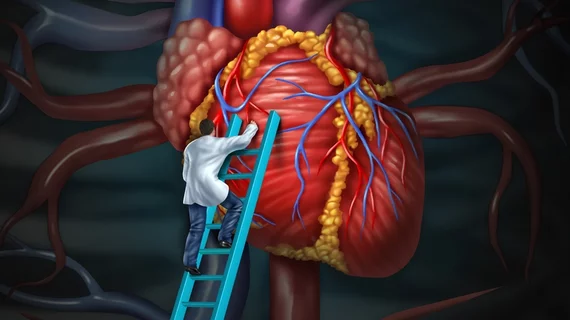Low BMI increases risk of cardiac tamponade during AFib ablation
Patients with a low body mass index (BMI) face a heightened risk of cardiac tamponade during catheter ablation for atrial fibrillation (AFib), according to new findings published in JACC: Clinical Electrophysiology.[1]
“Obesity is a known risk factor for AFib development and has recently been reported to be a risk factor for cardiac tamponade,” wrote first author Reina Tonegawa-Kuji, MD, of the National Cerebral and Cardiovascular Center in Japan, and colleagues. “On the other hand, the risk of cardiac tamponade during AF ablation in patients who are underweight has never been investigated; a reason for this may be that the proportion of patients who are underweight is low in Western countries.”
Tonegawa-Kuji et al. examined data from nearly 60,000 hospitalizations in Japan from April 2016 to March 2018. All patients underwent catheter ablation for AFib—either cryoballoon ablation or radiofrequency ablation—and the 18 patients who died following the procedure were excluded. The mean patient age was 65.6 years old, and 71% of patients were men.
Overall, cardiac tamponade occurred in 1.1% of patients. Pericardiocentesis or pericardial drainage was performed in 1% of those patients.
The authors found that being underweight—considered any BMI <18.5 kg/m2—was associated with a greater risk of cardiac tamponade. Women, patients 75 years old or older and patients with a history of heart failure, hypertension, diabetes and dialysis treatment were all also more likely to develop cardiac tamponade during the ablation procedure.
The use of cryoballoon ablation, meanwhile, was linked to a lower risk of cardiac tamponade among all patients than the use of radiofrequency ablation. The use of intracardiac echocardiography did not impact the risk of cardiac tamponade in any way.
“Clinicians should consider tamponade risk in the underweight population and take appropriate measures to reduce this risk, such as choosing cryoballoon ablation instead of radiofrequency ablation, if applicable,” the authors wrote.
Read the full study here.
Additional information from the American Heart Association on BMIs—including how to determine your own—is available here.

